If you haven’t seen Neptune or you may have but aren’t sure, your best chance to positively identify it is on New Year’s Eve. Mars is next to it in the evening to the west. The rocky red planet is easy to identify with the naked eye. Point a telescope or binoculars at it to see the distant blue gas ball next to it. The two are just 1’ 9” (0.019°) apart! A little below them is Venus. And below Venus is a thin crescent moon.
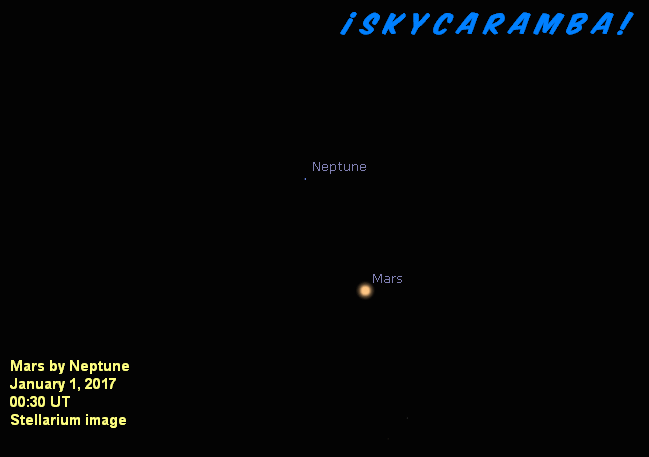
The lunar crescent is a little thicker and closer to Venus on the evening of January 1. Mars has moved to the other side of Neptune. The two planets are farther apart. That thickening crescent moon is approaching them on the 2nd. Observers in Hawaii and parts of the Pacific Ocean from there toward Alaska and the United States west coast will see the moon cover up Neptune on the 3rd Universal Time or the evening of the 2nd local time. When the occultation of Neptune ends, an occultation of Mars begins for a region of the Pacific to the west of the first event’s visibility area. An observer on a trans-Pacific flight might be able to see both provided he or she is able to have enough darkness and a view upward and toward the southwest from inside the aircraft.
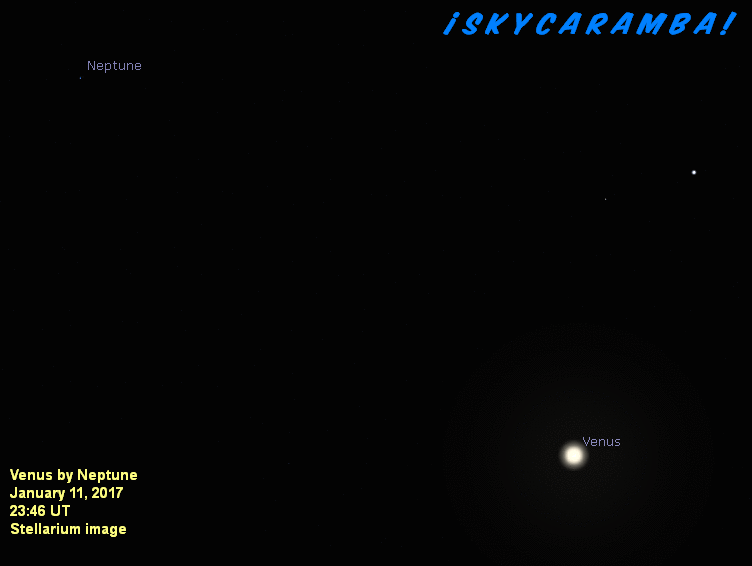
By the 4th or the 5th, you can easily see that Mars and Venus are moving eastward. Mars is leaving Aquarius as Venus enters it. On the 11th, Venus appears to be closing in on Neptune which is almost exactly where it was during its conjunction with Mars. But on the 12th, you can see that Venus doesn’t pass quite as close. Neptune is also harder to see because of the first quarter moon’s light. Venus just happens to be at greatest elongation 47.1° east of the sun at this time. It and Neptune are 21’ 49” (0.364°) apart.
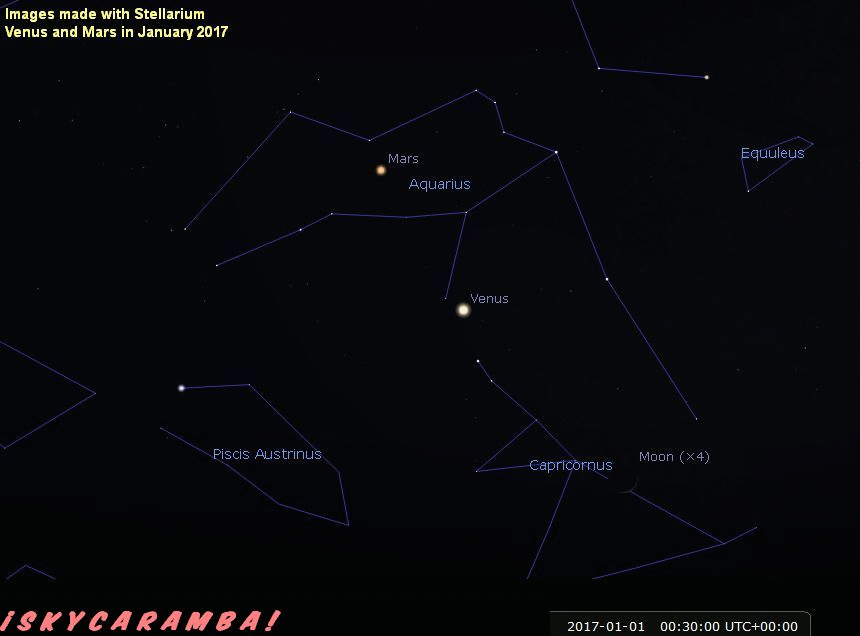
Just after the middle of the month, Mars and Venus are in the region between Pisces and Aquarius. Keep watching these two into February as Venus seems about ready to catch up to Mars but then veers off to go in another direction.
By the last days of January, Neptune will have moved somewhat eastward of its position at the start of the month. But it is still firmly in Aquarius. The best view will be on the 28th and 29th during new moon. The moon occults Neptune again on the 30th. It’s visible in Asia from the Gulf of Martaban to Tibet.
If you’re into occultations, you’ll like the one that hides Aldebaran on the 9th. It’s visible from the Northwest Pacific Basin, across China, to Nepal and parts of India north to Kazakhstan.
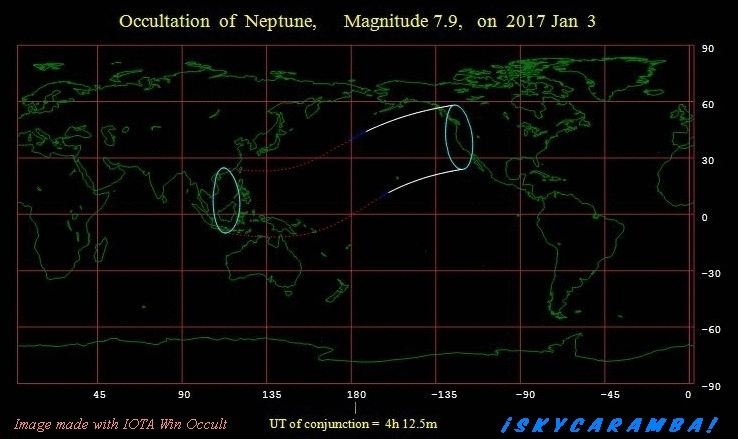
Jupiter rises a little after local midnight. It’s in Virgo near Spica. The big planet moves slightly eastward morning to morning for most of the month staying the north of Spica. The moon is near the big planet on the 19th. After that, Jupiter’s apparent movement slows in preparation for going retrograde. This slowdown is what’s described in many almanacs as going stationary, although careful viewing with magnification reveals the planet’s position isn’t exactly halting.
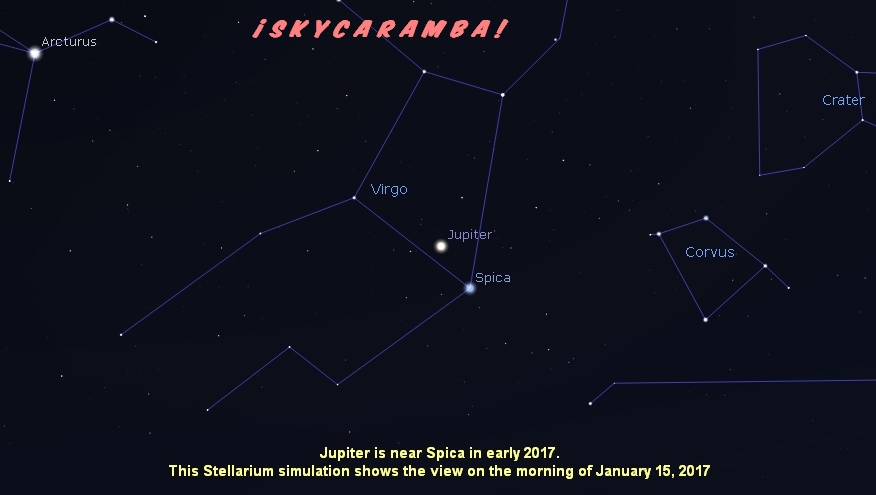
See Saturn during the hour or two before sunrise between Ophiuchus and Sagittarius. The ringed planet’s eastward movement is slight. It doesn’t move much from its position by the end of the month. Not that they’re really that close, but Mercury is closest to Saturn on the 7th and 8th. They’re almost 22° apart. Mercury is below Saturn. For those in the northern hemisphere, Mercury is below and left of Saturn. Mercury is at greatest elongation on the 19th. It will be 24.1° west of the sun. For this greatest elongation, best viewing is in the low southern latitudes, but it’s not really bad from anywhere unless you’re far enough south that the sun is up around the clock. A crescent moon passes Saturn on the 24th. You should still be able to see Mercury near the “teapot lid” of Sagittarius by then, although for northern hemisphere sky watchers it is getting closer to the horizon before sunrise.
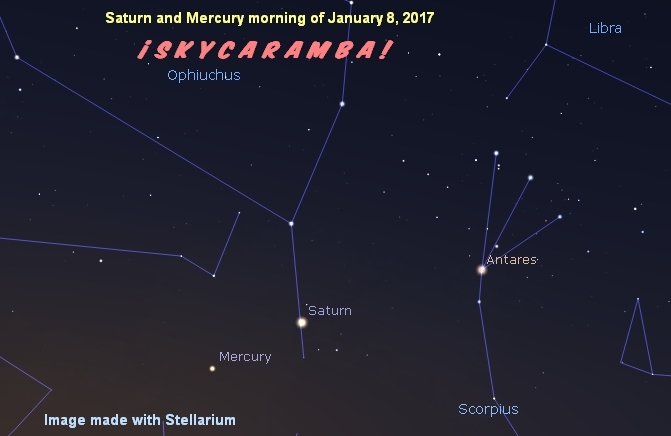
The moon is crossing the equator going north when it is at first quarter on the 5th. Full moon on the 12th is just after northern lunistice, so it will seem bright and close to those in the northern hemisphere. The moon goes south of the equator on the 17th and is at last quarter on the 19th. Southern lunistice is on the 25th with new moon on the 28th. Lunar perigee is on the 10th at a distance of 225,700 miles or 363,200 km. Apogee is on the 22nd at 251,500 miles or 404,800 km.
Earth is at perihelion on the 4th. It’s 91.4 million miles or 147 million km from the sun.
The moon is just before first quarter for the Quadrantid meteor shower. It peaks on the 4th. This shower has a far northern radiant that’s near the horizon most of the night from middle northern latitudes. Viewing will be best after midnight, but there may be meteors to see in the evening too.
